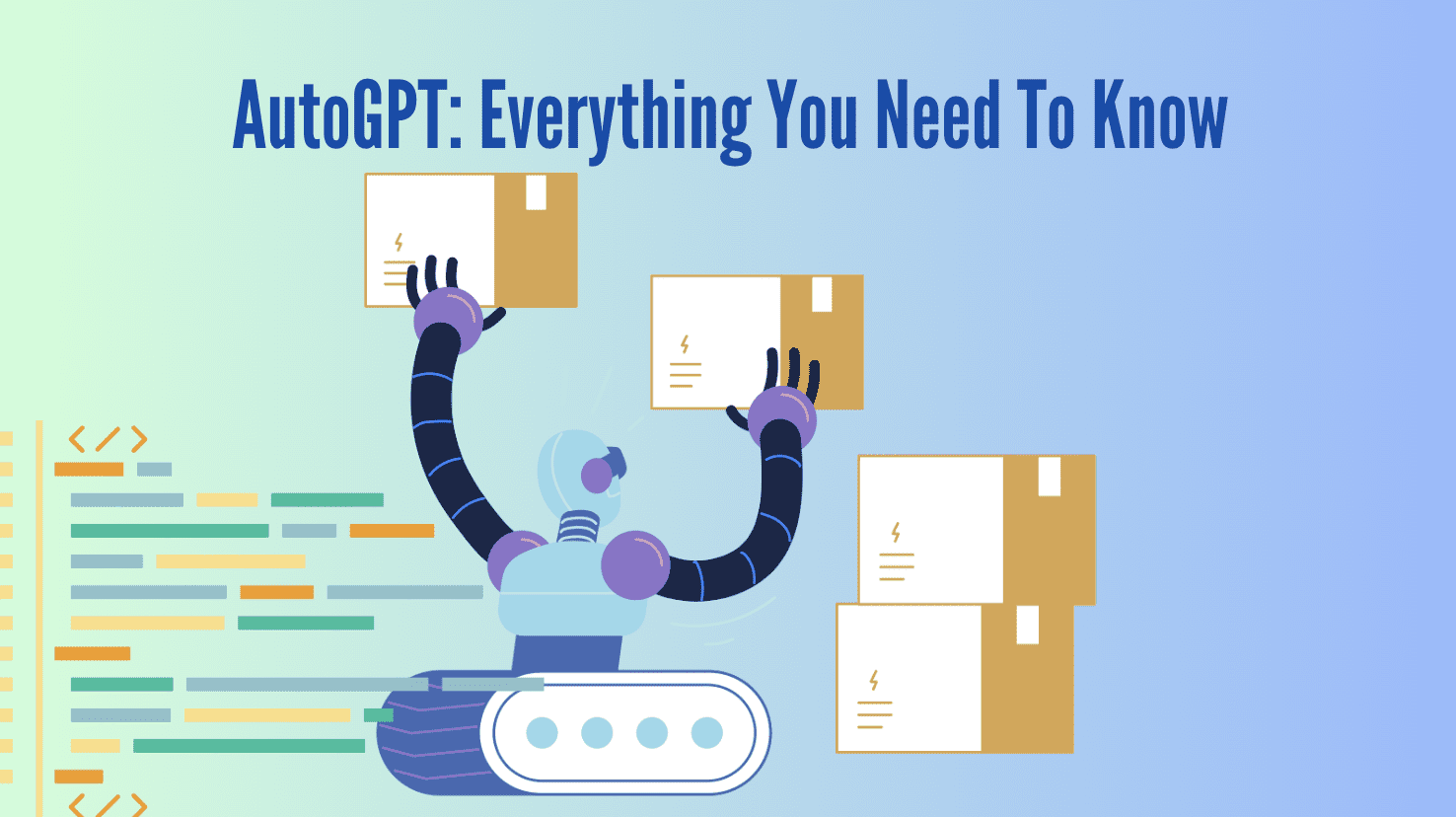AutoGPT: Everything You Need To Know
Just when we got our heads around ChatGPT, another one came along. AutoGPT is an experimental open-source pushing the capabilities of the GPT-4 language model.

Image by Author
Over the past few weeks, we’ve been taking in a lot of heft news about ChatGPT, GPT-4, etc. Some of you have probably seen something around AutoGPT, but naturally and I don’t blame you; you probably thought it was just another GPT-Plugin or Chrome-Extension. But AutoGPT is more than that.
What is AutoGPT?
AutoGPT combines GPT-3.5 and GPT-4 via API, allowing projects to be created that have been iterating on their own prompts and reviewing each iteration to improve and build upon it. How does this work exactly?
AutoGPT requires:
- AI Name
- AI Role
- Up to 5 goals
For example:
- Name: Chef-GPT
- Role: An AI designed to find an ordinary recipe on the web, and turn it into a Michelin Star quality recipe.
- Goal 1: Find a simple recipe online
- Goal 2: Turn this simple recipe into a Michelin Star quality version.
Once AutoGPT has met the description and goals, it will start to do its own thing until the project is at a satisfactory level.
So what’s so good about AutoGPT? Well first thing first, it is important to note that GPT has the ability to write its own code using GPT-4. It also executes Python scripts which allow it to recursively debug, develop, build and continuously self-improve. Crazy right? AutoGPT is a self-improving AI - showing true AGI (Artificial General Intelligence) capabilities.
AutoGPT’s feedback loop looks like this:
- Plan
- Criticize
- Act
- Read Feedback
- Plan
AutoGPT will read and write different files, and browse the web, along with looking back and reviewing its own prompts - just to ensure the project is what the user wants. You give it a goal, it scrapes the web for the best information out there, and then it autonomously does the task for you and continues to constantly improve itself.
AutoGPT will ask you for permission after every prompt, to ensure that the project is going in the right direction.
Here is an example of AutoGPT creating an app for Varun Mayya, a Computer Science Engineer. AutoGPT recognized that Varun did not have a Node, so it googled how to install Node, where AutoGPT then found a Stackoverflow article with a link, downloaded it, extracted it, and then spawned the server on Varun's behalf.
How Can I Use AutoGPT?
In order to use AutoPGT, credits will be used from your OpenAI-account. However, you can use up to 18$ which is included in the free version.
As I mentioned above, AutoGPT requires your permission after every prompt, meaning you will need to do a lot of testing. This allows you to test and cater your AI project to how you want it before it costs you anything.
Installation and Requirements
In order to use AutoGPT, you will need:
- Python 3.8 or later
- OpenAI API key
- GPT-4 API Access
- PINECONE API key
- ElevenLabs API for text-to-speech projects
In your CMD, Bash or Powershell window, clone the repository:
git clone https://github.com/Torantulino/Auto-GPT.git
Go to the project directory:
cd 'Auto-GPT'
Install the required dependencies:
pip install -r requirements.txt
You then need to navigate to the folder and rename .env.template to .env. Once this is done, open .env. You want to then replace the Keys with your OPENAI_API_KEY.
If you are using it for speech purposes, you will need to fill in your ELEVEN_LABS_API_KEY as well.
How to get your keys:
- OpenAI API key from: https://platform.openai.com/account/api-keys.
- ElevenLabs API key from: https://elevenlabs.io.
Once this is all done and successful, you want to run in your CMD, Bash or Powershell window:
python scripts/main.py
You’re ready to start using AutoGPT!
If you have any issues, please refer to GitHub.
AutoGPT Demo
You can download the demo video from the Auto-GPT GitHub repository.
Wrapping Up
I’ve been browsing news about AutoGPT on Twitter, LinkedIn, YouTube, and more. It seems like everybody has a different perspective and experience on the actual capabilities of AutoGPT. If you’ve had a chance to use AutoGPT, let us know in the comments what you’ve been able to create so far.
If you want to keep up with the future of AutoGPT, I would recommend following the brains behind it on Twitter: SigGravitas
What do you think is going to be next in the world of AI?
Nisha Arya is a Data Scientist, Freelance Technical Writer and Community Manager at KDnuggets. She is particularly interested in providing Data Science career advice or tutorials and theory based knowledge around Data Science. She also wishes to explore the different ways Artificial Intelligence is/can benefit the longevity of human life. A keen learner, seeking to broaden her tech knowledge and writing skills, whilst helping guide others.
